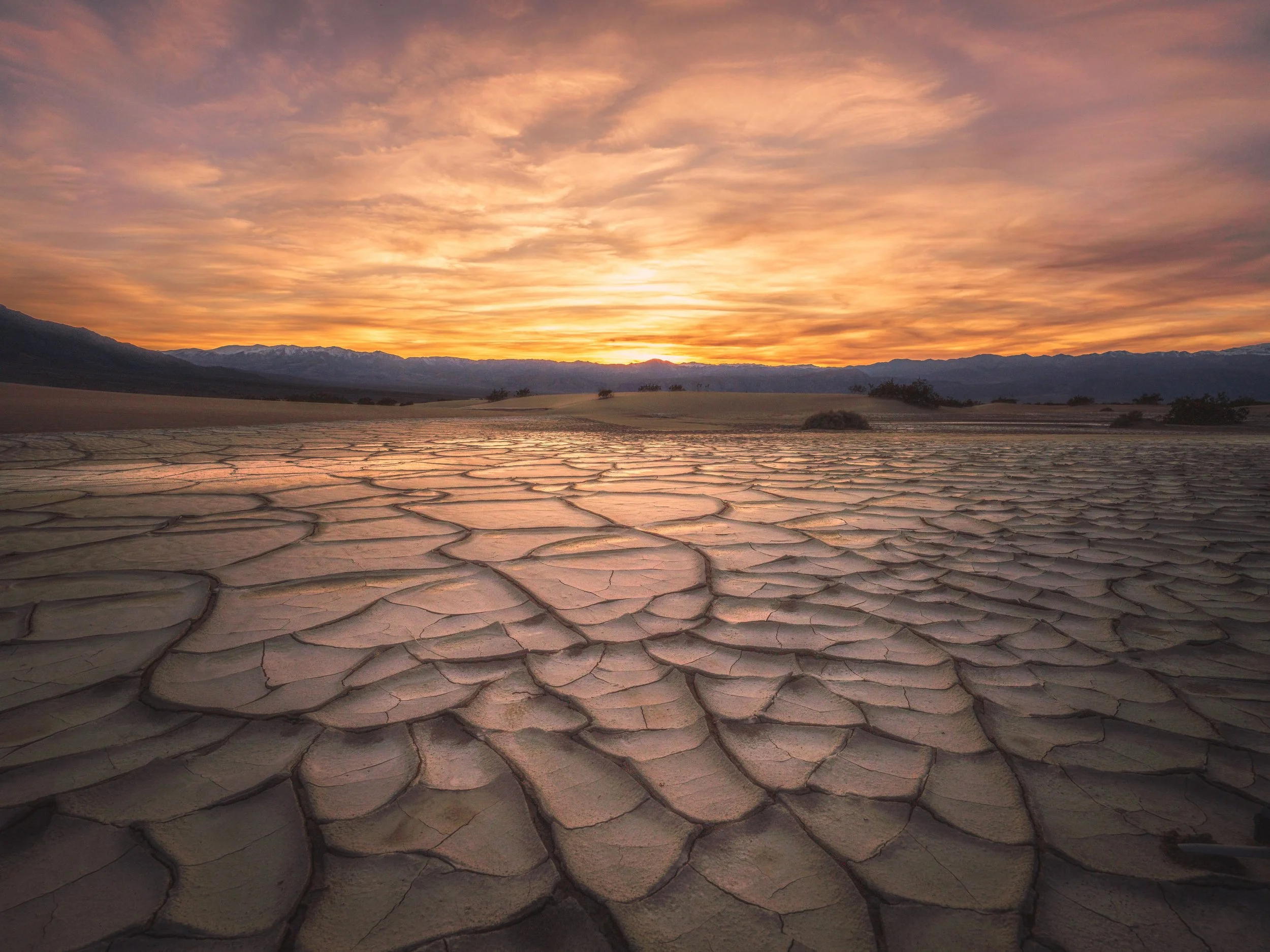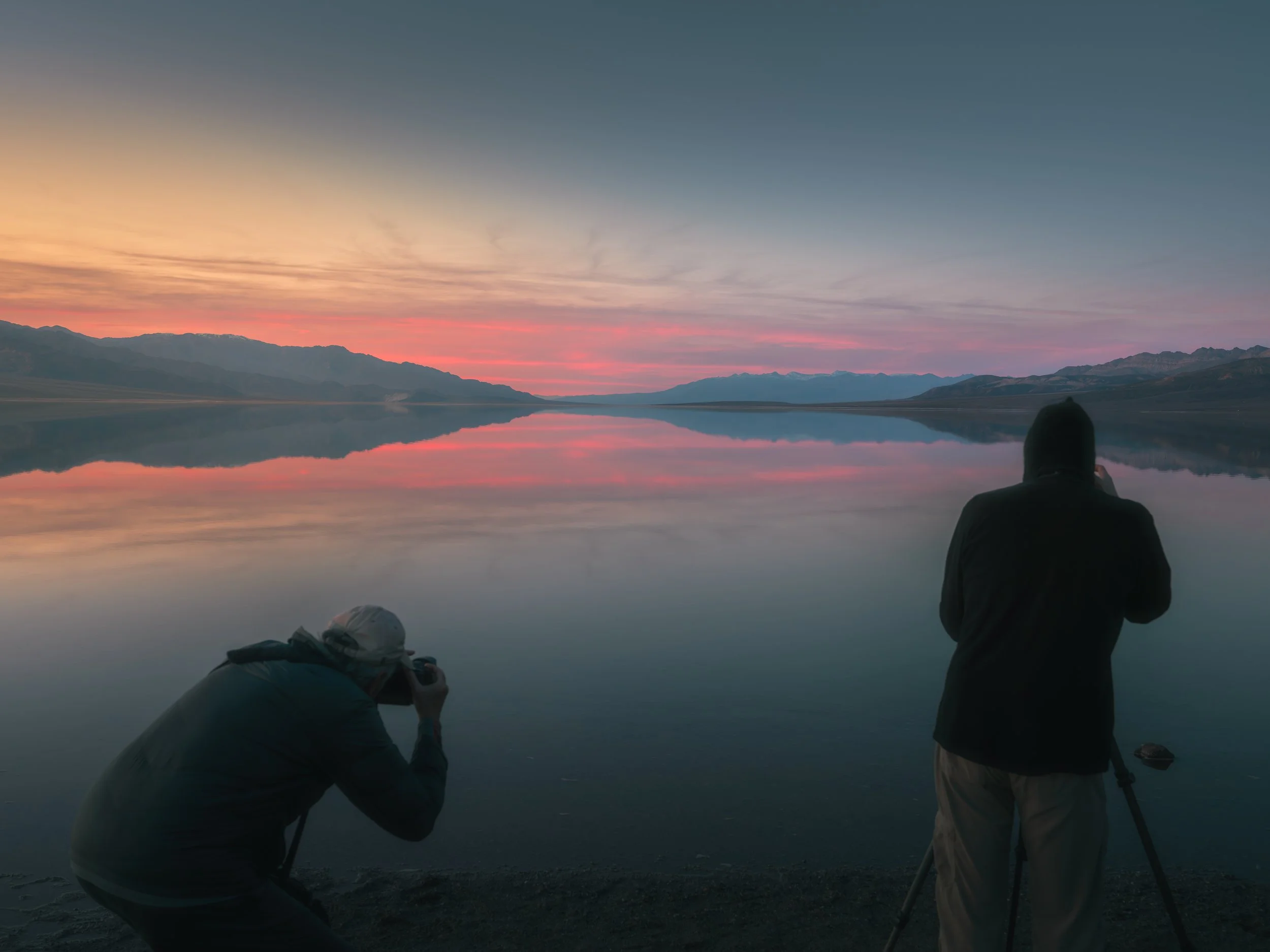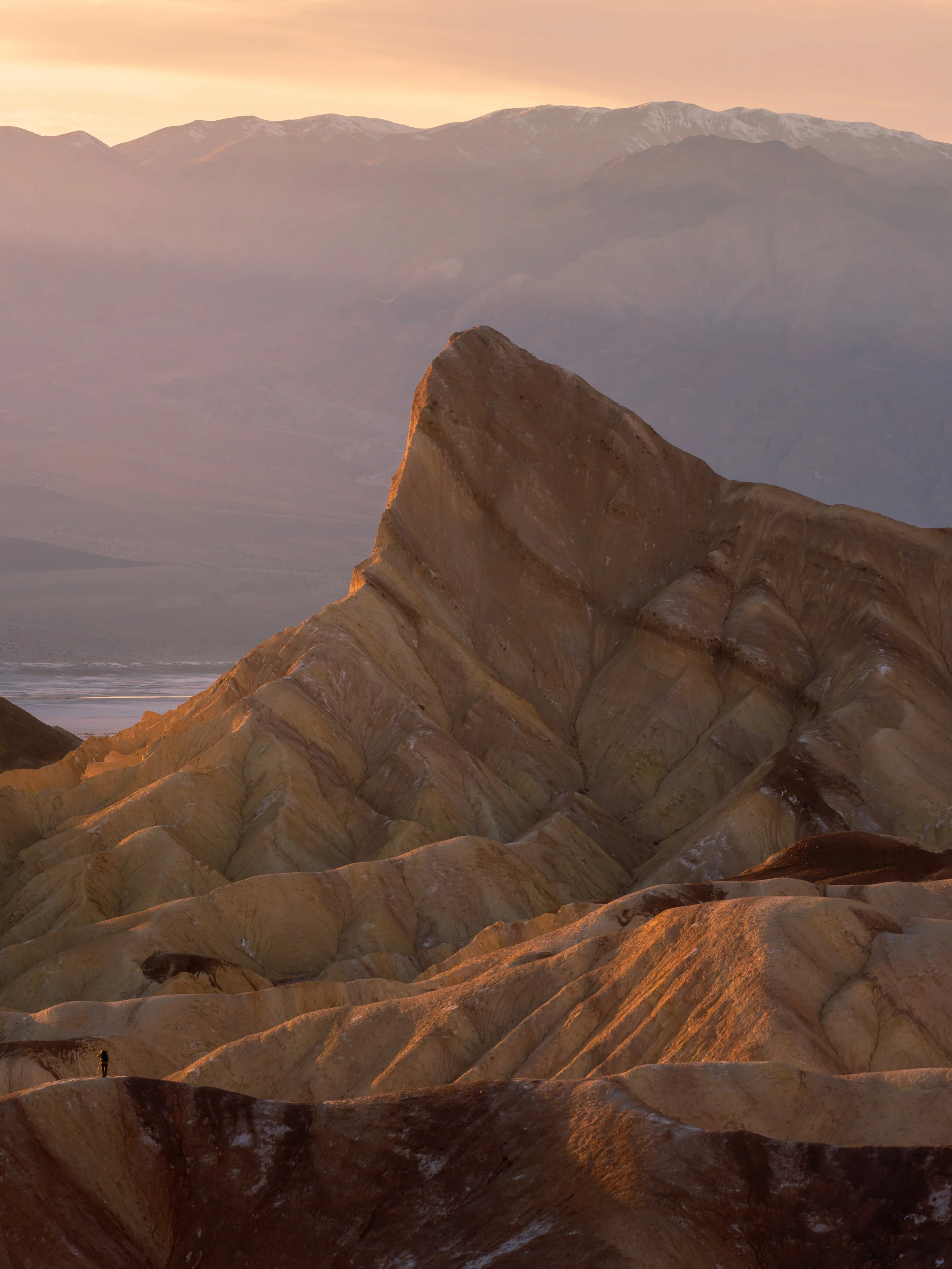Top Three Landscape Photography Locations in Death Valley National Park
Mesquite Sand Dunes
If you’re anything like me, you have spent countless hours surveying the internet to find the best information possible about photography in a National Park. We’ve all seen those incredible shots from a photographer that leave us speechless. We wonder exactly where that was taken and how much the conditions played a part in the overall image.
Death Valley National Park is a breathtaking location for landscape photographers and everyday hobbyists. The biggest issue some have is knowing when and where to be so they can take full advantage of their skill. Death Valley has been on the yearly travel agenda for several years. We take advantage of the warm winter days and early sunsets to enjoy what this National Park offers. We stay away from here in the summer due to the extreme heat and unforgiving sun. Either way, you choose, Death Valley has some of the most beautiful landscapes you could imagine. Here is our top three favorite places to photograph when we visit Death Valley National Park.
Mesquite Sand Dunes
Mesquite Flat Sand Dunes in Death Valley National Park is a captivating canvas for landscape photographers, offering a unique and ever-changing environment that captivates the eye. The dunes stretch across the valley floor, creating a mesmerizing play of light and shadow as the sun moves across the sky. The soft, wind-sculpted ripples on the surface of the sand create dynamic patterns that add a sense of texture and depth to photographs. During sunrise and sunset, the dunes come alive with a warm, golden glow, casting long shadows and enhancing the dramatic contours of the landscape. The stark contrast between the dunes' smooth curves and the surrounding mountains' jagged peaks further contributes to the visual appeal, providing photographers with a diverse range of compositions.
Moreover, Mesquite Flat Sand Dunes offers a sense of isolation and tranquility, providing photographers with a serene and unspoiled natural setting. The minimalist beauty of the vast, uninterrupted dunes allows for a focus on composition and the interplay of light and shadow. The ever-changing patterns and textures of the sand and the absence of vegetation and human structures create an otherworldly atmosphere that transports photographers to a timeless and remote landscape. The dynamic nature of the dunes, shaped by the constant winds in the region, ensures that all visits will yield different photographic opportunities, making Mesquite Flat Sand Dunes an enticing destination for those seeking to capture the essence of nature's beauty through their lens.
2. Bad Water Basin\Lake Manly
Lake Manly
The presence of a temporary lake in the arid landscape of Death Valley adds an unexpected and surreal element to the scenery. Photographers can capture the reflections of surrounding mountains and features in the water, creating mirror-like surfaces that enhance the visual impact of the landscape.
The juxtaposition of a lake in the desert, born from the rare occurrence of significant rainfall, allows photographers to document a fleeting moment in time. The play of light on the water's surface, especially during sunrise or sunset, can produce breathtaking and ethereal scenes. The dynamic nature of this phenomenon, with the lake appearing and disappearing based on precipitation levels, adds an element of unpredictability and makes Manly Lake a captivating subject for landscape photographers seeking to capture the ever-changing beauty of Death Valley National Park.
3. Zabriskie Point
Zabriskie Point at sunset
Zabriskie Point in Death Valley National Park is an iconic and unparalleled destination for landscape photographers, offering a dramatic and surreal panorama of the park's unique geological features. Renowned for its stunning vistas of the Amargosa Range and the Furnace Creek Badlands, Zabriskie Point provides an elevated perspective that showcases the intricate play of light and shadow on the eroded landscape. During sunrise and sunset, the colors of the surrounding rock formations transform, painting the terrain in vibrant hues of red, orange, and purple, creating a breathtaking visual spectacle that is a dream for any photographer seeking to capture the magic of the desert.
The textured and undulating badlands at Zabriskie Point present many compositional opportunities. The intricately carved ridges and the layered sedimentary rock formations provide a dynamic foreground against the expansive backdrop of Death Valley. The interplay of light and shadow on the rugged terrain accentuates the details, creating a three-dimensional quality in photographs. Additionally, the panoramic view from Zabriskie Point encompasses vast expanses of the valley floor, allowing photographers to capture the grand scale of Death Valley National Park and emphasize the sheer magnitude of its geological wonders. Zabriskie Point is a quintessential location for landscape photography, offering a harmonious blend of natural beauty, captivating colors, and unparalleled vistas.
These are our top three most photogenic landscape photography locations in Death Valley National Park. Remember, Death Valley is the largest national park in the lower 48 states, with 3.4 million acres. There are far more opportunities for landscape photography than what’s on this list, but this is a fantastic place to start as you get your bearings in this incredible wasteland.




